John Walter Christie and his tanks
In the process of knowing the wonderful tank world, I met regularly, and I meet with the opinion that, they say, that's all tank schools are good, besides American. And their layout is not the same, and there is no survivability, and patency only on highways is good, and indeed tanks are not very good. Perhaps the echoes of the Cold War have crept in here, or maybe the patriotic position does not allow us to properly assess the successes of others. There is, of course, some truth to it, one cannot call American armored vehicles the pinnacle of design thought, but this very thought also had its own heroes. So, for example, one can’t ignore the worthy engineer of his time, a native of the United States - John Walter Christie. And although the path chosen by Mr. Christie turned out to be wrong, many of his interim decisions and ideas had a strong influence on the tank-building world.
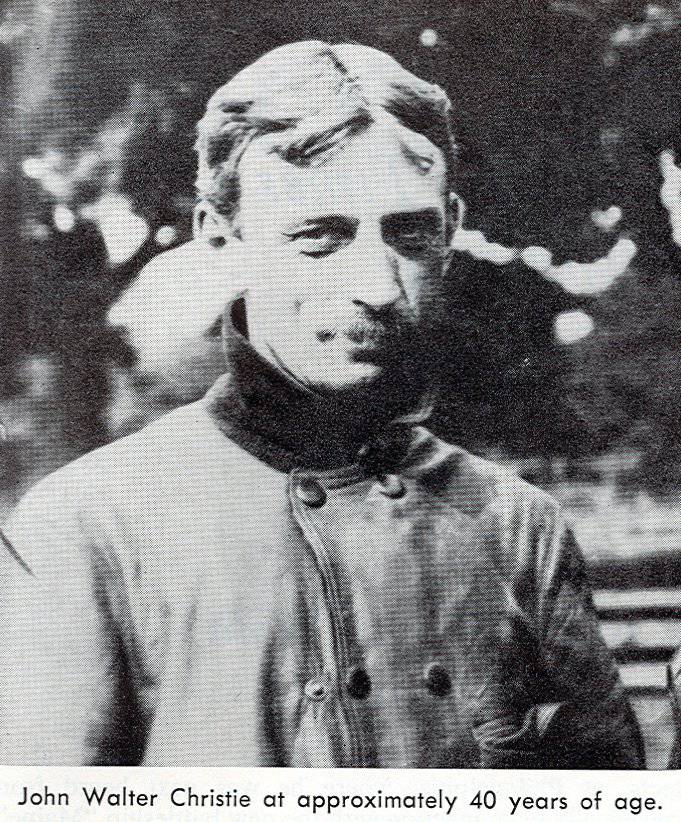
Walter was born in 1865 year, in a farm family living in the town of River Edge, New Jersey. Not very impressed with the romance of black soil and quarreling about it with his father, a young guy at the age of 16-years, tears his claws to New York, where he hires a simple worker at the plant of the De-Lamater Iron Works company. The boss of the guy notices, and career growth does not keep himself waiting. Realizing that new ideas and thoughts are difficult to communicate to others without a proper education, Christie enters the free evening courses of the Cooper Union organization. Study-work, work-study, and now, by the age of 1887, at 22, Mr. Walter becomes the leading consulting engineer of a large shipyard and is already profiting from several of his patents. The general specifics of his activities over the next ten years are now called “non-standard equipment design engineer”. He designed literally everything, from factories and steamboats to in-house plumbing. In 1897, he marries, after another three years he ceases to work “for his uncle” and opens his own business, at about the same time he is fond of auto racing.
Sport literally draws Christie into its depths. The thirty-five-year-old man, as a child, rushes to the opportunity to compete with other equally enthusiastic comrades. Then the world was more open and close to man, so racing race cars had to be designed independently, which, however, was not particularly difficult for a talented designer. The first car is a front-wheel drive with a 30-ti strong engine. The power of the following - is growing steadily, as well as speed. Already the third sports car design Walter holds under the hood 120 horses and can accelerate to 160 km / h. In the courtyard 1904 lazily passed the year. One of the most interesting technical solutions of an engineer is the use of front-engine cars with transverse engines and a direct drive system. The power was removed directly from the crankshaft and transferred to the wheels through the clutch. In order to clearly understand and appreciate the whole “goodness” of such an approach, it is worth paying attention to the T-72 tank's engine and transmission group; in it, too, the transverse engine gives power from both main journals to the onboard gearboxes. That is, its roots in such a scheme leads to John Christie.
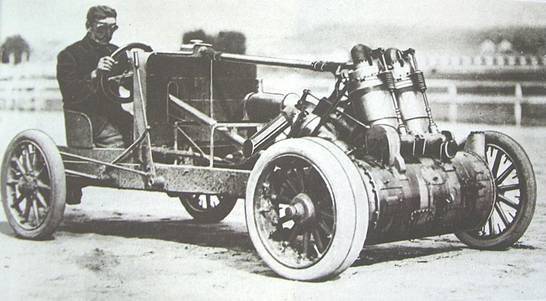
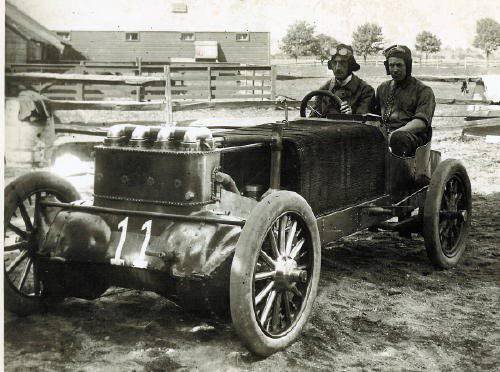
Well, these are not cars - these are songs!
Continuing to successfully win prizes, Walter is constantly improving their cars, but with increasing speeds and increasing risks. In one of the races, Christie nearly killed “the very one” Vincenzo Lancia, and in 1907, he himself crashed heavily. In 1910, the design racing career ended, and his nephew Louis continued to chase, delighting his uncle with new successes. Christie, from then until his death, is exclusively a design engineer, albeit with an adventurous vein.
There was a lot of money to race, and his nephew got the pleasure of “chasing”, so the engineer’s further journey takes him into the wilds of fire service problems from switching to horse-drawn traction. Restless talent back in 1908 year invented a motorized monoaxial front, so instead of buying a full-fledged car, you could simply replace the front axle of the wagon with a new one with an engine. The firefighters liked the idea, the work began to boil, the heavy cargo front began to bring profit, and in the meantime, between the lines, the thought flashes that it was a prototype of the modular layout of the equipment.
With the start of the First World War, John Walter Christie takes his first steps in the development of military equipment, reasonably expecting from this field much larger profits than from civilian orders. The first car “for the front” was a heavy cargo platform, released in the 1915 year on the basis of the notorious motorized front end with an attached cart. And although the equipment with honor withstood all the proposed tests, the military did not buy a truck, because it was needed - all-wheel drive. Although due attention was paid and ordered to the master wheel anti-aircraft self-propelled gun. So, at the age of 50, Mr. Christie becomes the designer of combat vehicles.
Until the creation of his first tank, Walter managed to design and test several types of self-propelled guns based on the wheeled-tracked chassis he had invented. For some time, work on the self-propelled guns and tanks even went at the same time, but, ultimately, the tanks seemed more interesting to the designer in the world military stories Christie is known more as a tank builder. The most interesting engineering solution in the self-propelled was the use of a wheeled-tracked chassis, the idea of which then just soared in the air, but most other inventors offered semi-tracked variants, and only an American brought the design to a logical absolute.
The results of the First World War clearly showed the possibilities and relevance of such a weapon as a tank. All sufficiently technologically developed countries of the world literally embraced tank euphoria. Hundreds of different projects flew to the tables of the military departments and offices. These were marvelous times of trial and error: the formation of world tank schools.
According to the findings of the special post-war commission in the USA, it was recognized that it was necessary to include in the tank forces not only heavy and light tanks, but also medium tanks. At the same time, the reports specifically mentioned very frequent armored vehicles going out on the marches. And it was not only a “weak” track, but also an increased load when driving on it to the engine and transmission elements. That is why they decided to turn to Christie, who already had a wheeled tracked chassis. 22 November 1919 of the year Walter receives a military order for the manufacture of a tank weighing up to 18 tons, specific power 10 hp / t, speed not less than 19 km / h and a range of about 100 km. Protection provided anti-bullet, the front part had to hold a bullet 12,7 mm.
After reworking an existing chassis, Christie received a rather interesting three-knuckle design. Features mixed course did not allow to raise the front roller from the ground, because it was also the steering wheel, but the low chassis significantly reduced the permeability of the car, and especially its ability to overcome vertical obstacles. The designer found the solution to be quite original - if necessary, the central rink lifted the tank above the ground and the throughput increased. Power was taken from the engine through a set of gears. The engine was also a personal development of the designer and gave out 120 hp. He turned the tank by turning off one of the side clutches. Not slowing down, but simply turning off, which caused insufficient controllability, while driving on a wheeled track, the rear driving wheel pair did not have a differential, filling up its drawbacks to questions of maneuverability.
The layout of the machine itself was made according to the classic scheme that subsequently became. The rear transverse engine, the placement of weapons in a rotating turret and "rational" angles of the frontal sheet, the thickness of which was impressive at that time - 25mm (board - 13mm). The main weapons the 57mm gun with a twin machine gun was assumed, the second machine gun was located in the commander's turret. The crew of the new tank consisted of three people.
After reviewing the details of the project, the military criticized the car. All three skating rinks were unsprung, only rubber bandage performed the depreciation. About the smoothness of the course with this approach and there could be no question. Thoroughly having quarreled with customers, Christi nevertheless yielded, and the next variation of the tank had double track rollers in the middle, connected in a self-sorted cart. This car was named the Christie tank model of 1919, although its first demonstration took place in the 1921 year. And again a squall of criticism, the lack of technological hatches in the reservation did not allow for field repairs, and in a close fighting compartment three people could hardly accommodate, and they were not enough for normal combat interaction. The tank came out shaky and very stuffy. Ventilation with tightly riveted body was also not so hot. Development had certain prospects, all identified deficiencies were solved, therefore Christie on her own initiative removes it from state tests for revision.
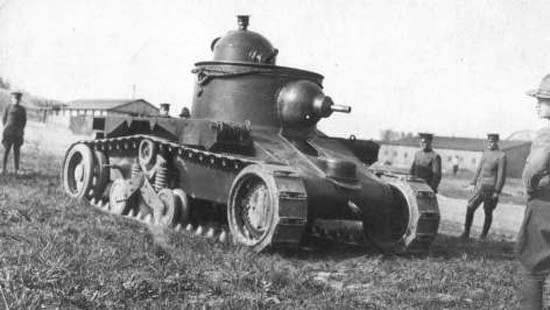
The second model. Instead of a large central rink - twin small
The new tank received the designation M1921 and was, in fact, a new machine. Instead of the tower - armored wheelhouse, more spacious, which allowed to place four. But the tank turned into a self-propelled gun, although at that time there was no such thing. The central rollers were enlarged, and the trolley was reconstructed, the front steering wheel was suspended, and the front-lift mechanism was dismantled. Due to the shift of the center of mass, the frontal armor had to be reduced to 19 mm. Yet, yet again, criticism followed. Weak patency and insufficient power, and most importantly, low reliability put an end to the first Christie tank. 10 July 1924, the car was sent to the museum, and the financing of the designer’s ideas from the state budget was stopped. For the sake of justice, I must say that the other medium tanks that participated in the program have not passed, and in the future the United States did not make any attempts to create such a class of vehicles for a long time.
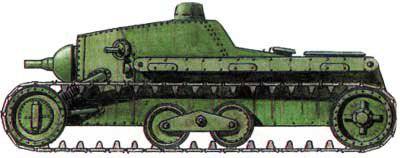
M1921
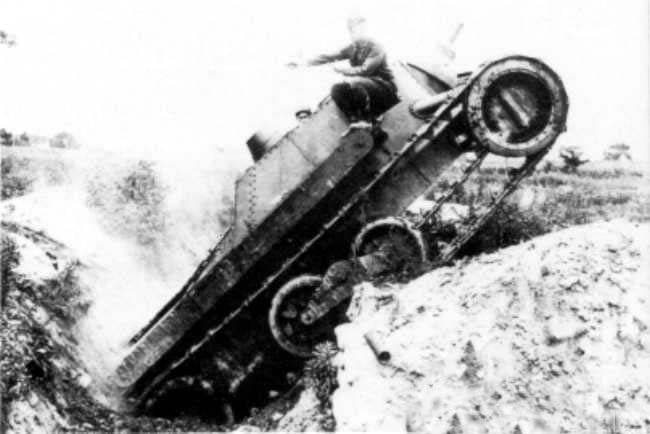
1924 year ended for Christie very hard. Having squandered all his cash savings, being seriously stranded, he also got jaundice to top it all. For five years, restless designer was invented and built a huge number of different military vehicles: heavy artillery tractor, a series of half-track trucks, self-propelled 3-x and 4,7-inch anti-aircraft guns, 75mm, 105mm, 155mm and 203mm artillery self-propelled guns, a number of floating artillery (!) platforms and of course tanks. All work was carried out at a small production site, Walter took part in all the trials personally and constantly refined his cars, so that almost all of them were significantly upgraded. But the fruits of this incredible capacity for work has brought little. Of all the above magnificence, the military bought only 15 of different machines. These were mostly prototypes that did not receive further development.
The financial crisis forced Christie in 1925 to sell blueprints of their newest amphibians to the Japanese for 25 thousand USD. Clearly understanding that he supports the geopolitical adversary of the United States, the designer simply had no other choice. This and the success of semi-tracked trucks in the commercial field allows you to somehow get on your feet. So much so that in the same year, when he heard about the Polish competition for "the best tank in the world," again headlong into military development. The project is named Christie tank M1927. It is based on two previous designs. This is primarily the body of the M1921, that is, the designer does not return to the tower layout, but the suspension was borrowed from the floating self-propelled gun M1923, which is sometimes called a tank, but it did not have armor according to the weight limits. , because the tank was not even close.
The layout of the model was somewhat imperfect, since in the frontal compartment, the gunner and gunner were moving with machine guns, and the driver was peacefully side by side with the commander. The driver's review was clearly not up to par, and the co-ordination of the shooter’s actions causes questions. But the suspension finally gained smoothness. All rollers were springs with the exception of the rear leading. With the engine of obscurity, what brand and how many cylinders should have been, but all sources agree that the planned power is 110l.s. Probably Christie wanted to put again his engine from previous models, just forced. But the power reserve in 300 km should have pleased the customer.
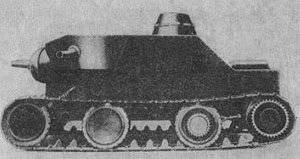
All the work done was ultimately useless. When in May 1927 of the year, Walter sent sketches of his miracle machine, it turned out that the competition was over for more than a year. And although the Poles did not like the ideas of the money, they did not even officially consider the proposal of the new tank. True, later, they actively used these developments, simply stolen from Christie.
М1927 was embodied only in the form of a wooden model, not a single sample in the metal was built.
Perhaps the most significant machine designer. This is the same ancestor BT-2. It all began ... No, just madness of the brave, we sing a song. Our hero is still a very stubborn uncle and failure with the Poles did not stop him.
He began by refining the chassis again. For the first time, the famous “Christie suspension” appears on the arena. The basis was still the same chetyrehkatkovy system with twin rubberized wheels, only now each roller through the yoke was connected to a powerful spring. The spring itself was hidden inside the case. The length of the suspension was chosen so that the tank could literally fall on the belly. The rear drive sprocket is raised, and on the wheel, the thrust is transmitted to the rearmost rear roller via a chain. To improve the cross-country ability, the front raised sloth was added to the undercarriage. Actually, that's all. The hull remained classic for Walter's inventions - straight sides, bowed wedge-shaped nose, and again all this stuff without a tower. But no, there was a zest - the engine was a V-shaped Liberty L-12 with as much power as 340 hp. Seeing racing past strongly prevailed over the thoughts of the designer. The armament was invented by the residual principle and consisted of only two Browning 7,62mm machine guns, one of which was placed in the front sheet, and the second on top of the hull.
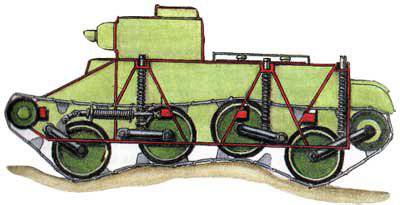
Scheme of work Christie suspension
They called this thing the M1928 and the very first tests showed the tremendous speed of the car. 120 km / h on a wheel and 67km / h on a track. It is a pity that Nascar was not there then. The military, as always, rolled out a bunch of claims, it must be admitted that it was not unreasonable. Basically, it was a repetition of past mistakes: small space, thin armor, weak weaponry. However, cavalrymen liked it and, according to the test results, the 22 of August 1929 of the year was recommended to be taken into service, naturally, after correcting the flaws.
The updated machine, which received the designation М1931, was made by 1931 for the year. The hull remained virtually unchanged (only the thickness of the forehead armor increased from 13 to 19mm and do not care about cramping), but a single turret with a 37 mm gun appeared. Chassis is also not fundamentally changed. Walter as always spat on the opinion of warriors, and it turned out the same thing, only with the tower. In January, the new car went to the state tests, which again took place. The designer had been trading for a long time and, by the year of 1932, he finally received an order for 7 tanks, which received the designation Medium T1. Three "boxes" went to the infantry, they were called Medium Tank T3, and four received cavalry already called Combat Car T1, since the cavalrymen relied only on armored vehicles, had to go to the trick and take full-fledged tanks as armored vehicles.
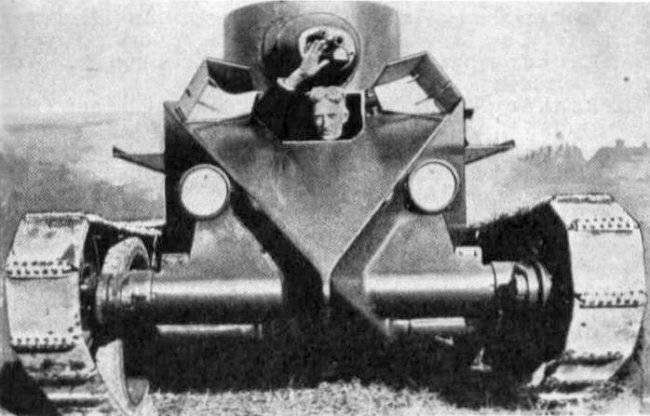
M1931
In addition to the native army, a number of other countries became interested in new machines. The same Poland, which, then was in the creative quest, sent to the US a certain captain Marian Rusyn. The captain felt the M1928 with pens, looked at the M1931 drawings, and approved the technique. Already at the end of February 1930, Christie received an order from the pany for manufacturing the M1928 probe for testing. According to the results of these very tests, a purchase of a license could well have taken place, but ... After a couple of months, the Americans returned the money without explanation. Ears stuck out of the Soviet Union, he also became interested, and agreements with the councils promised to become much more profitable. The Poles did not lose their head and, in the best traditions of modern China, by the 1937 year they did 10TP to themselves, in full growth using the practices of Walter.
Contrary to popular belief, the Soviet delegates who presented a new car did not immediately try to tear it off with their arms and legs. The high-speed, but extremely low-armored and low-armed vehicle simply did not fit into the concept of the formation of armored forces of the USSR. However, after much deliberation and testing, it was decided to purchase several samples, and most importantly - machine drawings. Already directly on the territory of the Union, the test results revealed a lot of design flaws, which, in general, was typical of Christie’s cars. Nobody wanted to go to the camps, and the money was spent. The tank was recommended for production, however, provided that the project was deeply modernized - this is how BT-2 was born. The “BT” index instead of the traditional one-letter “T” for the councils appeared just the same because the machine did not meet the requirements of the tank-tractor auto-armor system.
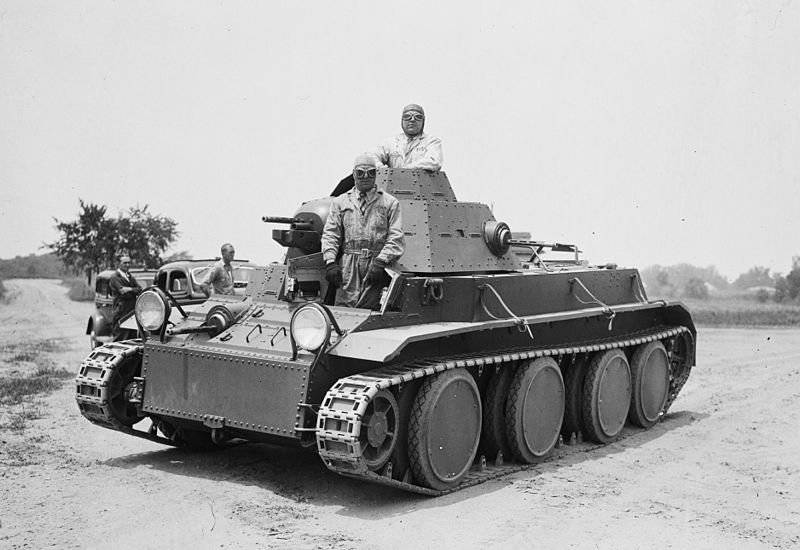
Upgraded M1931 - T3EX1
The last customer of this undoubtedly iconic tank was the army of Britain. And, surprisingly, impressed by the Soviet BT-5, which was clearly better than its prototype. In October, the British asked 1936 to sell a sample that had been left in stock. Christie willingly agreed to bypass the new ban on the sale of modern weapons in the USA, and fused the Brit to disassemble a tank as a batch of oranges. This machine was the ancestor of the cruiser tank Mk III. The designer himself at that time had long been engaged in his new ideas.
The success of the previous model inspired the maestro to develop a new, phenomenal notion. This time the tank became her usual, flying. 9 remained for years to bring to the mind the same idea in the country of councils, and the designer himself turned 1932 in 67.
Taking the M1931 as a basis, Christie made it as easy as possible by actually sacrificing reservations. Also from the innovations - duralumin rollers, not just wrapped cast rubber, but with installed pneumatic tires. And the engine ... 12-cylinder V-shaped Hispano-Suiza with a herd of 750-h horses. During the tests, a five-ton tank on a wheel at a speed of overclocking to 190 km / h, however, on caterpillars gave "only" sotochku. This thing easily flew over a six-meter ditch, the benefit of the huge suspension travels made it almost painless. Armament was located in the front hull sheet, the tower was absent.
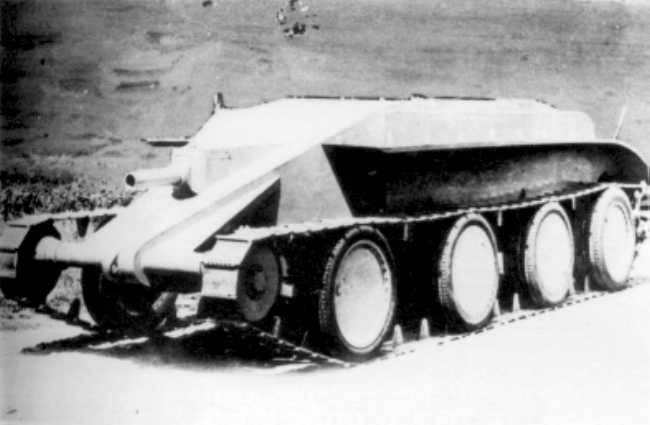
Initially, it was planned to transport the car on the external bomber hangers, but it was not excluded, moreover, even a scheme with its own wings and a propeller was developed. In his old age, John Walter Christie became an aircraft designer. The division of the military was not interested, because the creator asked for a lot of money for it. According to rumors, an experimental copy went to the USSR, where he disappeared without a trace in the furnace of the forge of communism.
Having practiced in the creation of armored vehicles in 1933, John Christie returns to the tank theme again. Around this time, he receives money from the army for the revision of the M1931 - T3 modification. It is from these finances that the necessary funds are made, and the M1935A appears in the arena, as a concept of an airborne tracked vehicle. The layout was carried out according to the reckless design standard for the designer, the crew consisted of only two people, and the booking thickness was no more than 13 mm, and there were only three support rollers. The army did not approve of the idea, it can be said almost did not notice, probably tired of Christie's jumpers. Our resilient comrade did not stop and immediately issued a new car to the mountain - М1935В, in which he added another roller, but otherwise the improvements were minimal. And again, "past the box office." The third attempt, already under the marking M1936, also did not inspire the potential buyer. Of the features of this latest version, it is necessary to single out the suspension removed from the reserve room, which made it possible to abandon double sides, but significantly increased the vulnerability of the suspension elements. Armament of all modifications Walter planned to place in the front hull sheet, and it varied from 57 to 75 mm guns. However, in all cases, limited to the installation of mass-dimensional layout. In the future, the designer did not depart from the concept of airborne technology, but the uncompromising and authoritarian approach naturally led to the fact that sensible ideas themselves were rapidly falling into nowhere.
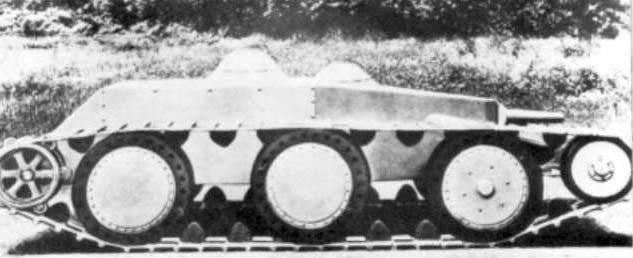
M1935 ...
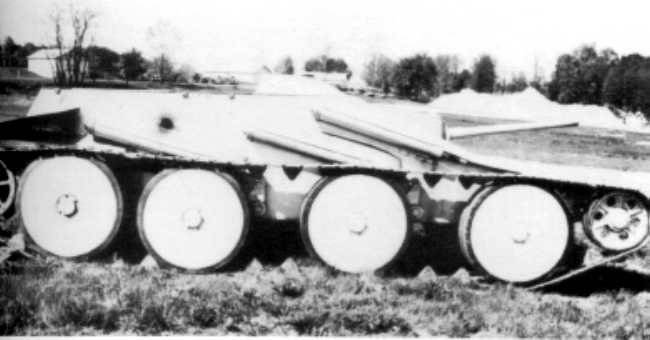
... and B
In general, it is rather difficult to write about the latest models of Christie’s tanks. They did not differ much in variety, and the engineer’s creative vein was growing more and more stiff. Despite the apparent disinterest of the army in previous machines, the designer was still confident that it was his path that was right, and all the others simply did not understand anything about military technology. Therefore, the 1937 machine of the year was not significantly different from its predecessors. Unless the case was slightly reworked, the head-on booking increased (the data is walking somewhere around 15 mm), and they didn’t even remember about the weapons, the layout that had already become traditional was not installed. The army also traditionally ignored Christie’s proposal. Suddenly, the British are interested. Impressed with the BT-5 on the large Kiev maneuvers, they invited Walter to participate in the development of their cruiser tank Cruiser Tank Mk.III (A13), after purchasing the stale Christie M1931. The engineer agreed to help, as there was a catastrophic shortage of money, but by 1938 a new prototype had been issued. This time the positioning has changed, now the plans included the installation of a powerful gun in the frontal list, and the car threatened to become an airborne anti-tank self-propelled gun. Of the interesting things worth noting is the use of light alloys wherever possible: in the elements of the gearbox, fuel tanks and several other nodes, which allowed again slightly thicken the front sheet and reduce weight. Further development of the prototype stage has not progressed.
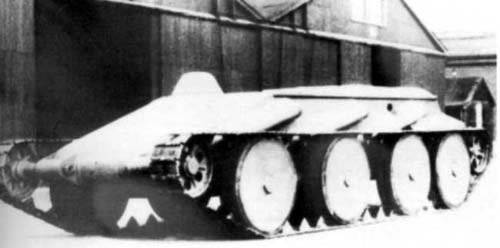
M1937
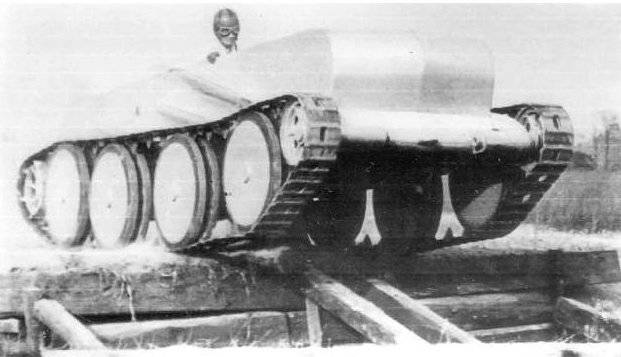
M1938
Latest design constructor. The age of seventy is no joke. The machine is essentially no different from its predecessors. Is that Christie finally deigned to meet the critics and increased the amount of space reserved by installing an armored cabin on the body in which, according to various sources, it was planned to install from 37 mm small to 90 mm recoilless gun.
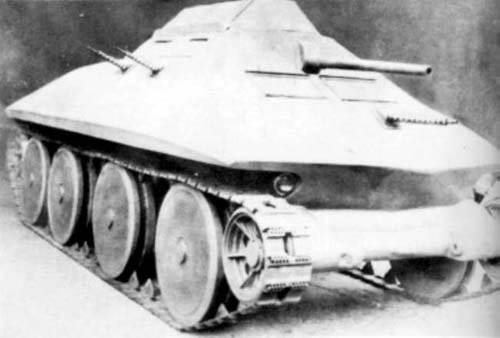
M1942
In 1944, the long and eventful life of a talented designer, whose ideas were largely ahead of time, ended. And even if many of his undertakings were destroyed, his own “obsession” and short-sightedness, but without a doubt, the engineering genius of this person literally dictated the conditions and directions of work for many tank schools of the world. And if the next time you think that the Americans did not come up with anything sensible in the tanks, then remember the good old Uncle from New Jersey - John Walter Christie.
Sources used:
http://www.aviarmor.net/interest/interest.htm
K. Romasev, V. But "The First Wheeled-Tracked Military Vehicles of John Walter Christie"
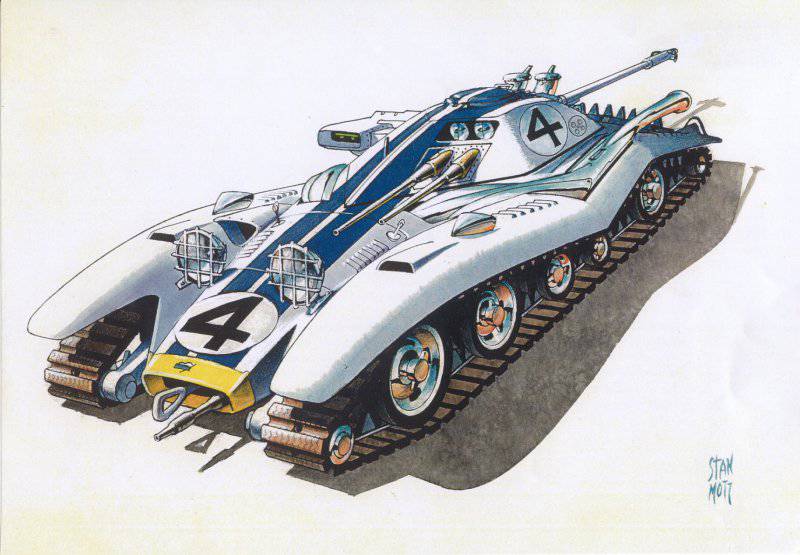
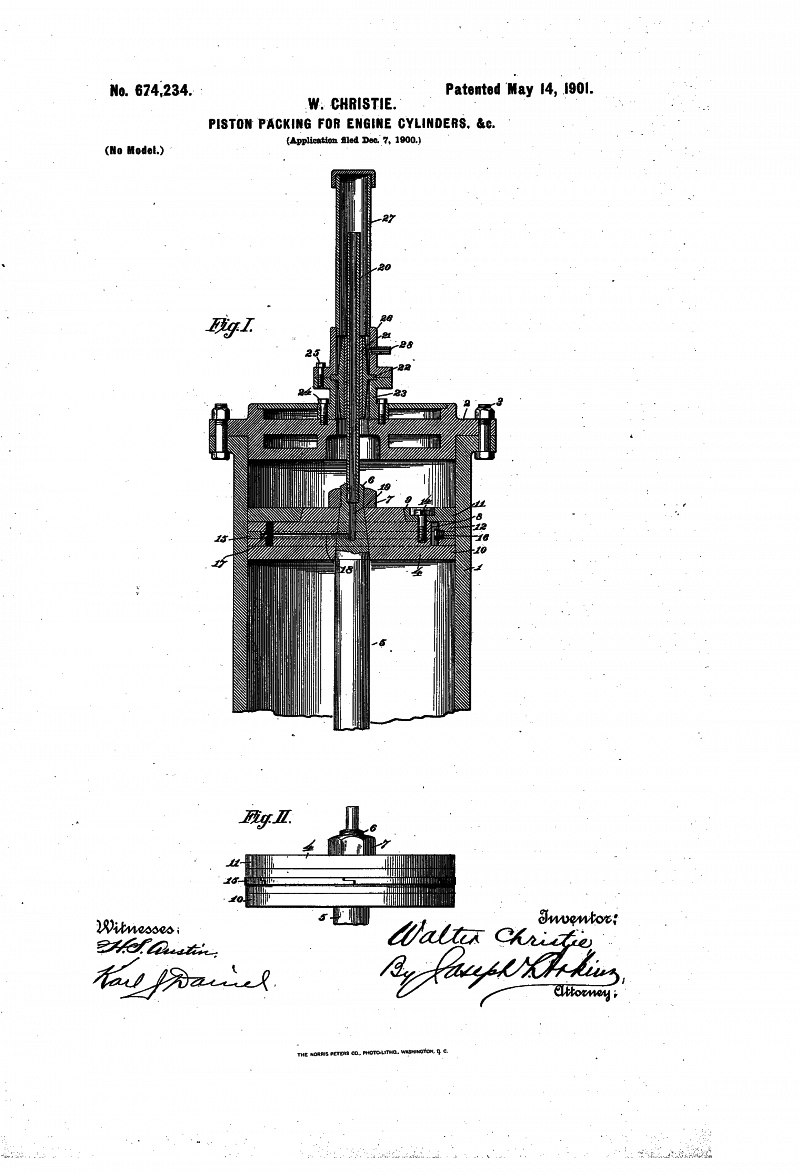
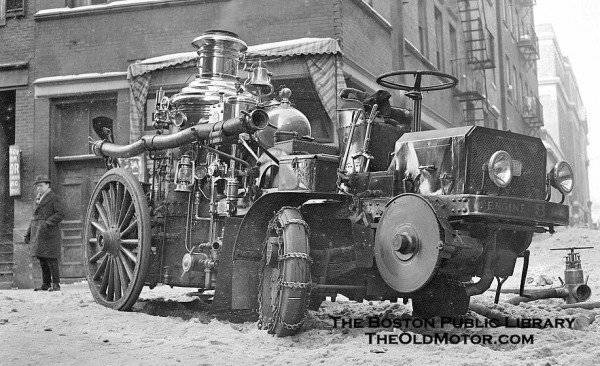
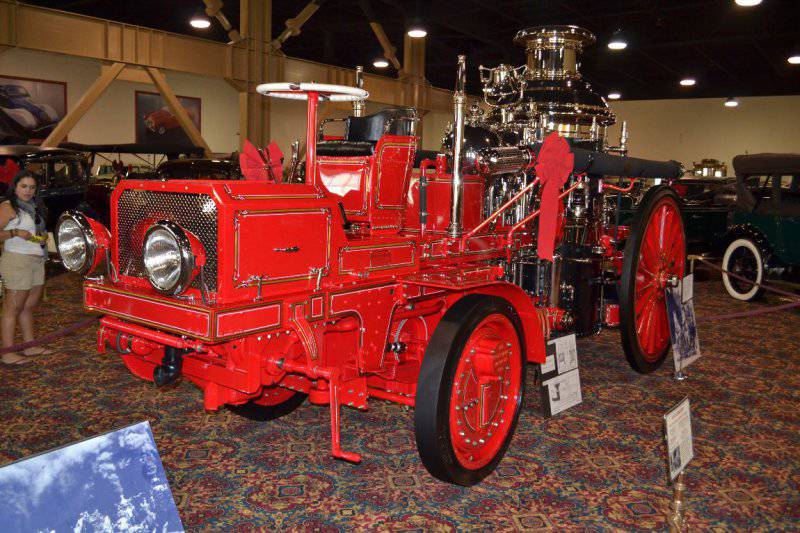
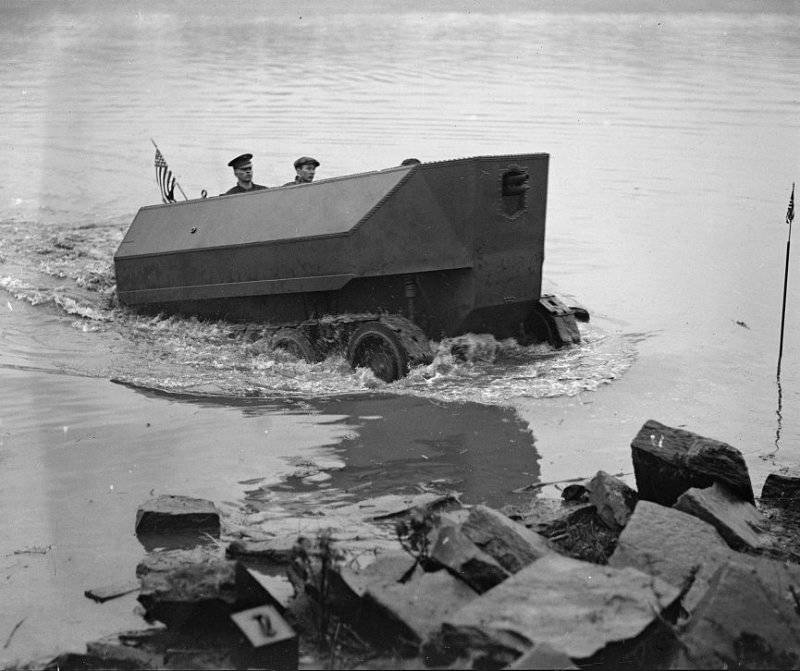
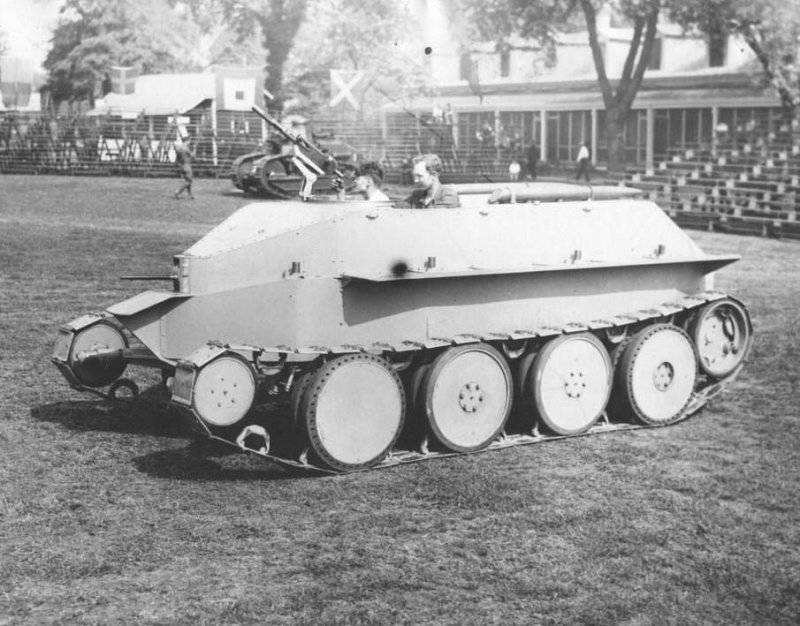
Information